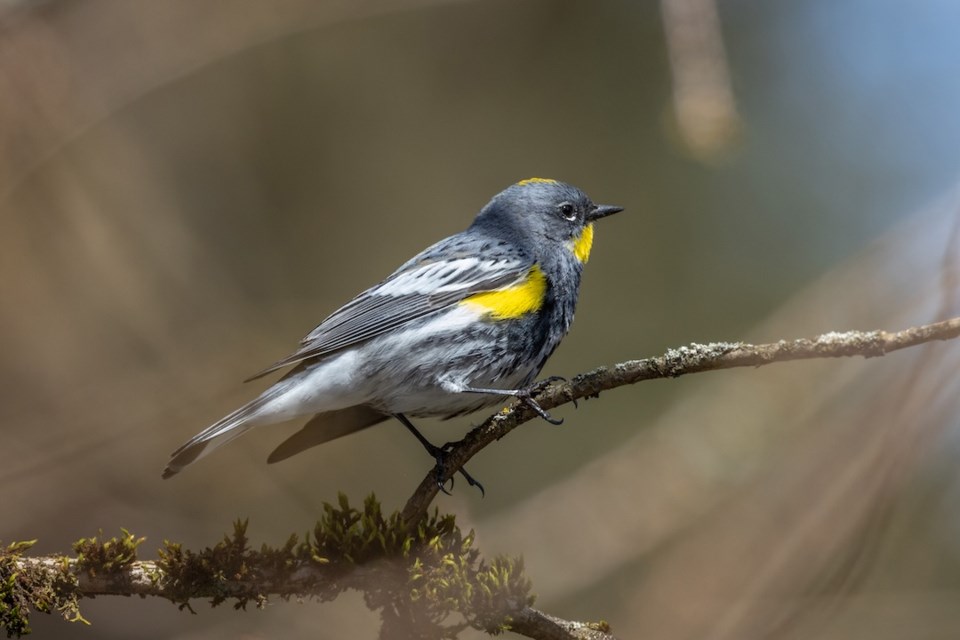Late March is my favourite time on the Sunshine Coast (apart from all the others!) Looking out from my window, there is a colourful palette of blue sky, green conifers, pink cherry blossom, yellow forsythia, and white clematis. In the sun, it is warm enough to sit in the garden and listen to the birds singing their spring songs. I can also listen for the vocalizations of migrant species that have been absent since September, when they flew away to spend winter in warmer climes.
The cornerstone species of March migrants are swallows (both tree and violet-green), rufous hummingbird and yellow-rumped warbler. There is usually a tiny smattering of reports of these species in the second and third weeks of March, followed by increasingly large numbers in late March and early April. Male rufous hummingbirds can be distinguished from our resident Anna’s by their rufous backs and golden-orange gorgets (not the pink of Anna’s). Care is necessary in identifying hummingbirds, as their iridescence can play visual tricks, as orange becomes jet black with the turn of a head.
Yellow-rumped warblers are very abundant migrants and also breed here. The males are stunning in their pristine spring plumage, a mix of black, grey, white and yellow, and are easily identified by their yellow throats and yellow rumps. Females are a subdued brown but still have the yellow rump. These warblers, the first of the family to arrive, are common right now in low elevation, open, mixed forest, and their presence is indicated by their distinctive “chip” call note or their warbling song (hard to phoneticize). The second family member to arrive, in early April, is the orange-crowned warbler, a green bird, with a song described as running your finger along the teeth of a comb.
Other prolific songsters right now, are Pacific wrens (forest) and ruby-crowned kinglets in open, treed areas. Both are tiny, brown birds, with long, loud, complex songs. House finches are singing in suburban habitat, and one of the Coast’s commonest summer species, white-crowned sparrow, has begun to arrive. A few white-crowns spend the winter with us, usually around bird feeders, but they arrive en masse in April, and their somewhat mournful song is part of the spring and summer tapestry of life on the Sunshine Coast.
The first overflying snow geese flocks were reported by various observers on March 27. Many thousands will fly north during April. Along with the snow geese will be flocks of Canada, cackling (a small Canada-type), and white-fronted.
In the last few days of March, John Hodges found a Say’s phoebe, a mountain bluebird and a western meadowlark, all scarce coastal migrants that summer in the interior.
To report your sightings or for questions contact me at [email protected] or 604-885-5539. Good spring birding.



